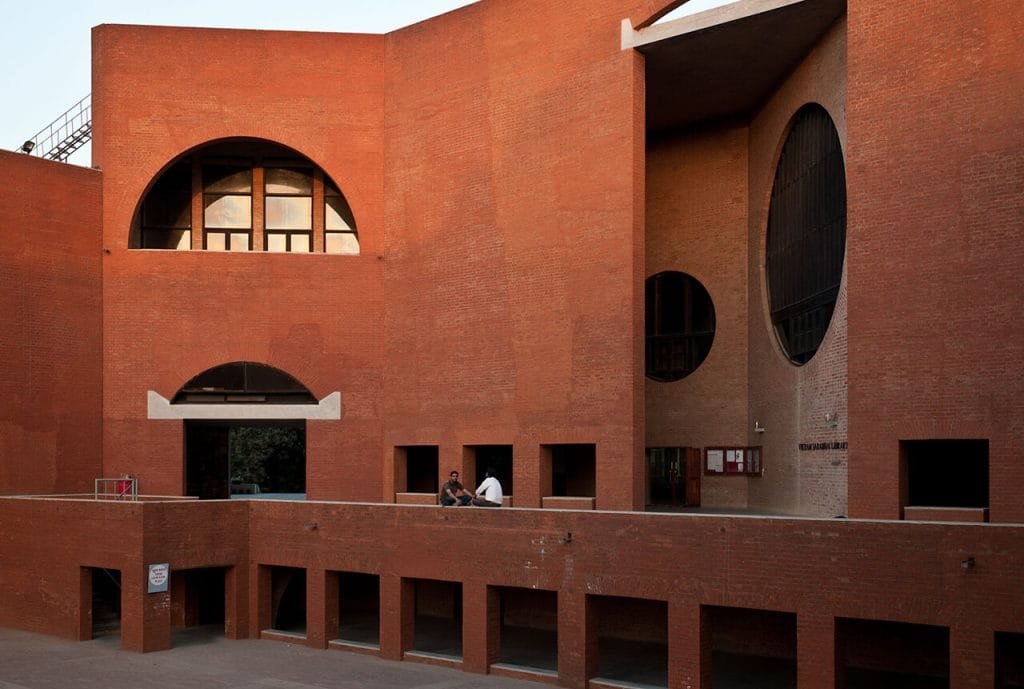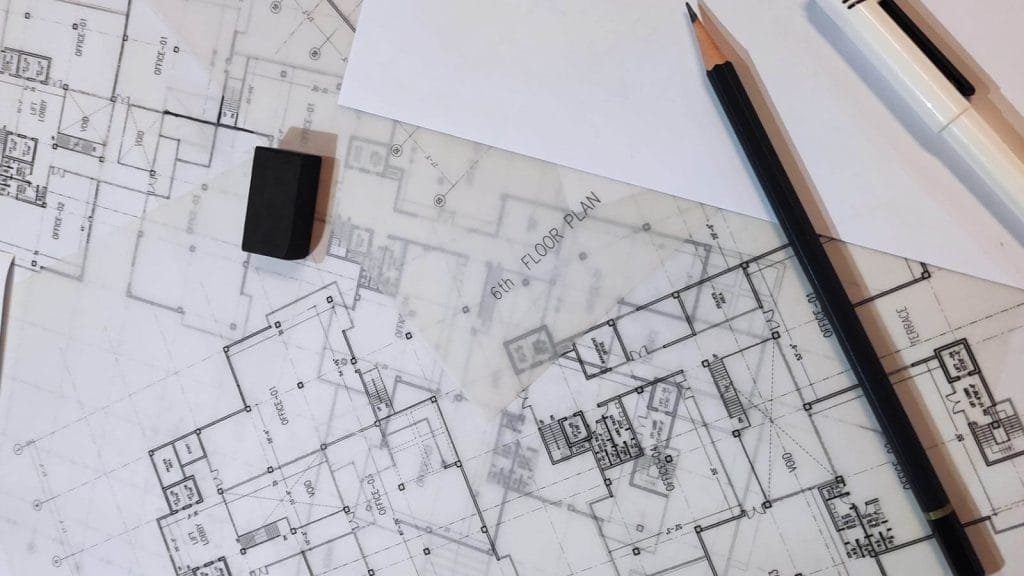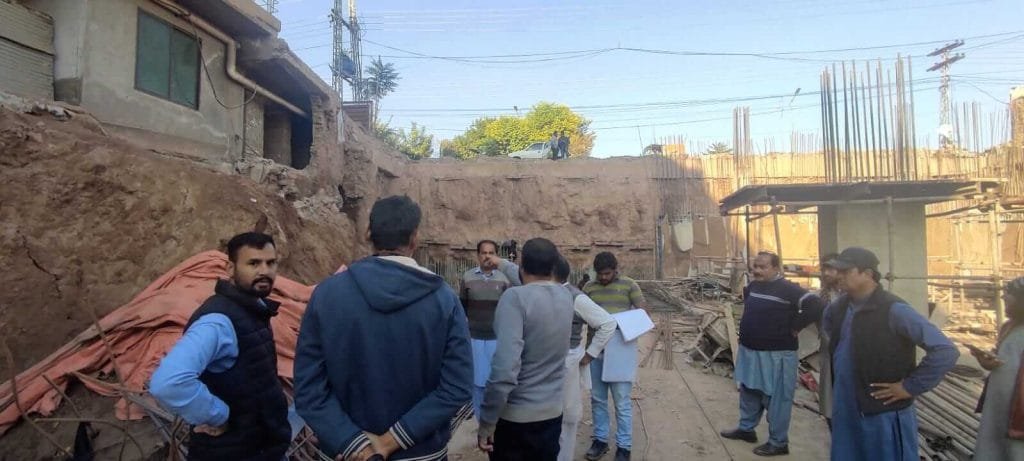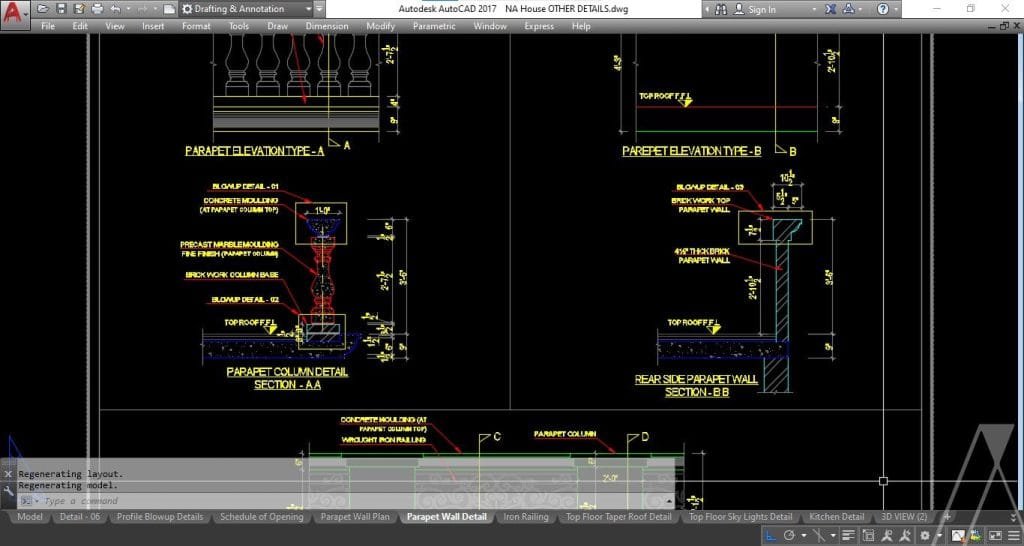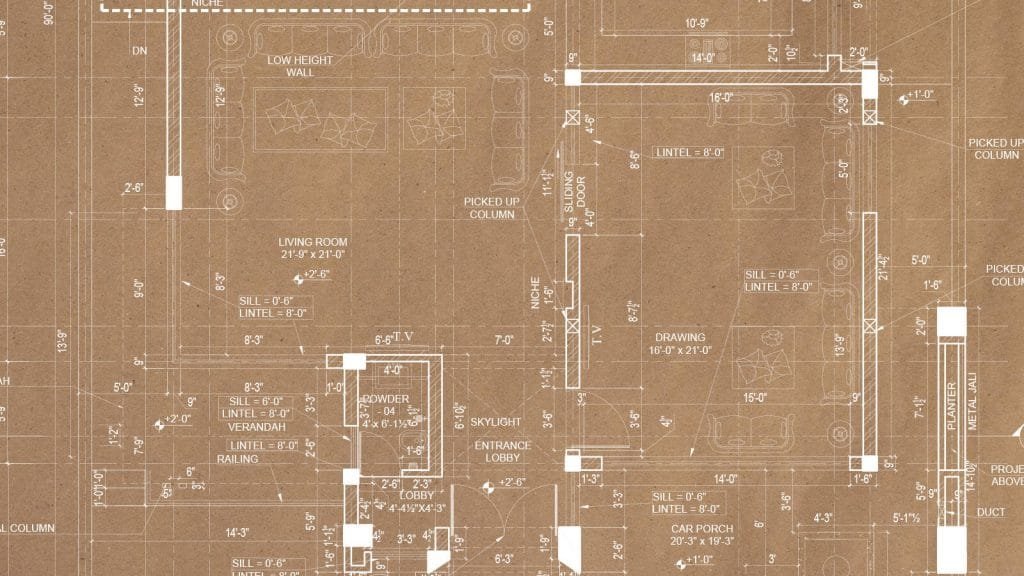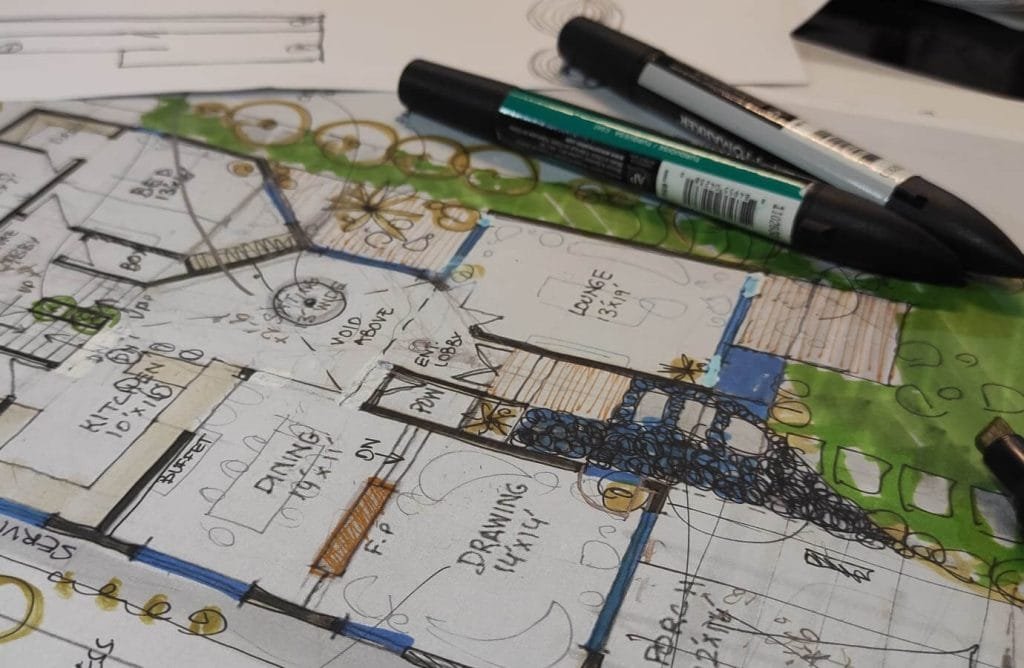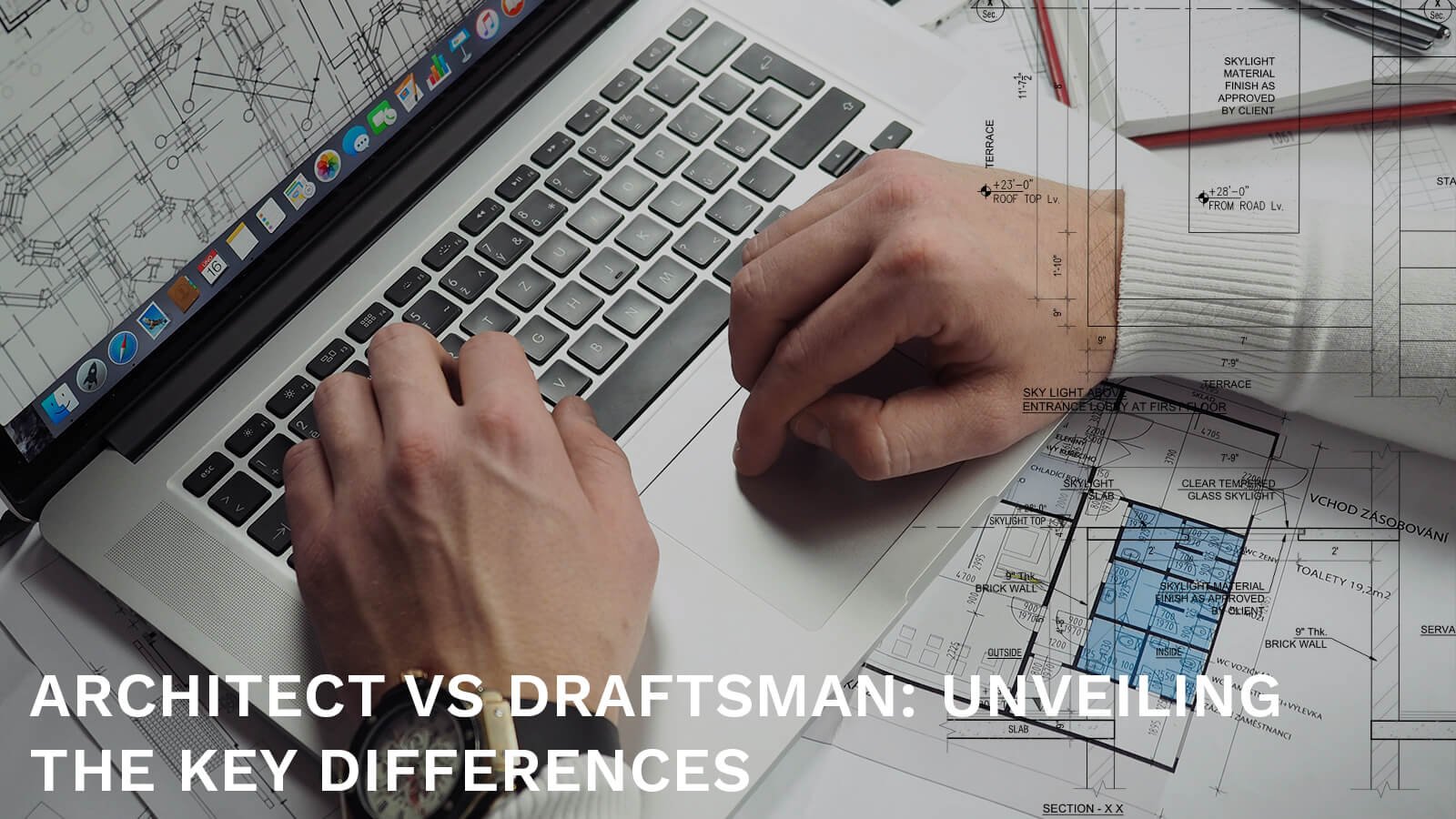
Architect vs. Draftsman – Unveiling the Key Differences!
An architect and a draftsman are often used interchangeably in construction and design. At the same time, both are responsible for the creative and aesthetic aspects of a building. Still, in reality, they represent two distinct professions with different skills that play crucial roles in bringing architectural visions to life with the accuracy of the technical drawings.
But what exactly is the difference between the architects and drafters? An architectural firm has both drafters and architects on staff. Let’s take a closer look.
Architects: Crafting Vision and Functionality
Architects are the masterminds behind a building or structure’s artistic and functional design. They are trained and licensed professionals who understand not only the aesthetic aspects of architecture but also the functional, technical, and practical elements that go into creating a safe, sustainable, and visually appealing space while working closely with clients to understand their needs and preferences.
Architect’s Education and Expertise
To become an architect, you need to get a formal education in architecture; this education typically lasts 5 to 7+ years and includes a wide array of subjects, including architectural history, building systems, structural design, environmental science, and more.
These degreed architects must then work as an intern or apprentice at an established architectural firm and pass a licensing test. The term “Architect” is protected by law and can only be used by people who meet these educational and professional standards.
Responsibilities of Architect
Architects are responsible for conceiving the overall design of a building or structure. They are involved with the project from the initial idea and conceptualization to the final and post-construction phases. Architects work closely with clients to understand their needs, preferences, and functional requirements. How the user will use the space and live inside it, the flow of the layout and how it will affect the user.
Architects are also trained in architectural drafting and can draft detailed design drawings that encompass spatial layouts, materials, building systems, codes, standards, and aesthetic elements. They focus on the big picture while paying meticulous attention to every detail.
Architects are also trained to collaborate with engineers, contractors, and other professionals to oversee the construction process and bring the design vision to life. Architects also monitor the progress of many projects during the construction stage to ensure that the building is being built as planned.
Project Management, Landscape, Interior Design, and the List Goes On
In addition to design, architects and architectural firms often take on project management, interior, landscape and product design roles. Hire architects as an investment; their comprehensive involvement often leads to a more refined and thoughtful design, which can affect construction costs.
Since they have project management training and technical experience, they work with stakeholders, including engineers and contractors, and build projects to ensure success within time and budget.
Architects act as visionary leaders, guiding the project from inception to completion, making adjustments as necessary to align with the client’s goals and industry standards.
Draftsmen: Translating Vision into Technicality
Conversely, drafters are experts in translating architects’ designs into technical drawings and plans. Even though they did not contribute to the creative design, their drafting work on the building is crucial.
Draftsmen’s job is to link between an architect’s conceptual design and its eventual physical realization. Drafters focus on producing accurate and precise drawings that convey the specifications and dimensions required for construction.
Drafters pay attention to the construction process’s dimensions, procedures, materials, and every intricate detail. Drafters are considered an essential parts of architects’ staff.
Draftsman: Education and Training
Becoming an architect requires a bachelor’s or master’s degree in architecture, practical training and licensure. On the other hand, drafting technicians usually have a diploma or associate degree in drafting or a related field.
While formal education is often beneficial for drafters, it generally does not require the extensive training and licensing that architects need. Drafters can enter the field through vocational training programs, on-the-job training, or associate degree programs focused on drafting and CADD (computer-aided design and drafting) skills.
Draftsmen possess an in-depth understanding of design software and technical drawing techniques. They use tools such as Computer-Aided Design and Drafting (CADD) software to convert the architect’s ideas of space into precise, detailed, construction-ready drawings that construction teams can use.
The work of drafters includes construction drawings, which include floor plans, elevations, sections, and other documentation required for construction, including shop drawings and any drawings needed during construction to help the construction team understand how to build it. A draftsman knows all aspects of technical material designs, and drafters can help make minor plan changes. Still, they need to consult the architect if a significant change is required.
While architects have a broader understanding of design principles, architects expect drafters to be specialized in translating those designs into precise blueprints.
Architects and drafters bridge the gap between architectural vision and practical execution.
Communication and Coordination of Draftsman with Architects
Drafters work closely with architects to interpret design concepts accurately. A draftsman’s training primarily focuses on technical issues. It ensures that the technical drawings they create adhere to the architect’s intent while meeting regulatory standards and construction codes. This collaborative relationship between architect and drafter ensures that the design vision is effectively translated into tangible plans.
Drafters work under the supervision of architects or engineers, translating design concepts into practical drawings that can be used for construction, manufacturing, or other purposes. Drafters are crucial in accurately documenting the design intent and ensuring that all technical details are correctly represented in construction-ready drawings.
While focusing on those technical aspects, it is the job and responsibility of the draftsmen to point out any technical mistake in architectural designs that pops up.
Precision is the hallmark of a draftsman’s work. They meticulously incorporate measurements, dimensions, and annotations into their drawings to give construction teams the exact specifications to bring a project to life. Every line and symbol in their drawings significantly conveys information to builders and contractors.
What Do I Need? Architect or Draftsman?
It depends on your specific needs and the work’s extent. If you are looking for drawings of technical schematics of space, you can work with a drafter; you can expect construction, material design drawings, and actual on-site measurements for spaces as they do not have the technical background to go beyond making minor changes to a space.
However, you are looking for basic plans for a simple, small residential project, such as a single-family home, or a more complex project or need more comprehensive design services. In that case, hiring an architect may be more appropriate.
But do keep in mind that, unlike a drafter, an architect will have a different approach to the same design; as an artistic plan expert, architects lead the project for clients, and the draftsman has no idea why a specific design decision was taken. Some aspects of designs are always oblivious to drafters, as they need to learn the reason behind every design decision.
Architects ensure the design meets all relevant building codes and regulations. Consider hiring an architect if you want to change an already-built project or need more comprehensive design services. They believe the minutes of things like qibla, light direction, circulation, and designing the house according to the client’s needs.
It is a good idea to carefully consider your needs and the scope of the work before deciding on the appropriate professional to hire. Meeting with a few different professionals and getting proposals from each to help you make an informed decision may be helpful.
The Future of Each Profession
The future of each profession changes quickly, making it hard to keep up. The architecture profession has changed significantly in recent years. In the past, only architects could plan and supervise building construction. However, technology has changed that.
The major difference between architects and drafting technicians is education. Drafters do not need a degree, but architects do. Unlike drafters, architects are licensed by their state.
The market needs to determine the destiny of each profession. Although architects will always be needed to design new buildings, drafters may become less important as technology advances.
The future of each profession is unknown, but one thing is sure: the world of architecture is continually changing with the addition of Artificial Intelligence (AI), and those who can adapt will flourish.
Understanding the differences between architects and draftsmen is pivotal in ensuring the success of any construction endeavour. While architects lead the design and management, drafters provide the technical backbone that allows projects to move from concept to reality. Collaboratively, these two professions contribute to creating remarkable structures that shape the built environment.
Frequently Asked Questions about Architects and Draftsmen:
Question: Are architects more expensive than draftsmen?
Answer: Due to their comprehensive involvement, architects generally come with a higher price tag. As meet all your needs, contemplating not only the size of space but overall aesthetics and
Question: Can a draftsman also provide design ideas?
Answer: While their primary focus is technical drawings, experienced drafters can offer valuable design suggestions. Drafters often need more aesthetic or thorough experience background to go beyond making minor changes to your plan.
Question: Can a drafter manage a large commercial project?
Answer: For complex projects, it’s advisable to have an architect lead the design, with drafters handling technical aspects.
Question: Can a draftsman work independently without an architect?
Answer: Draftsmen can work independently on specific projects, especially those that require technical drawings and plans. However, collaboration with an architect is essential for complex designs and larger projects to ensure a cohesive and comprehensive approach.
